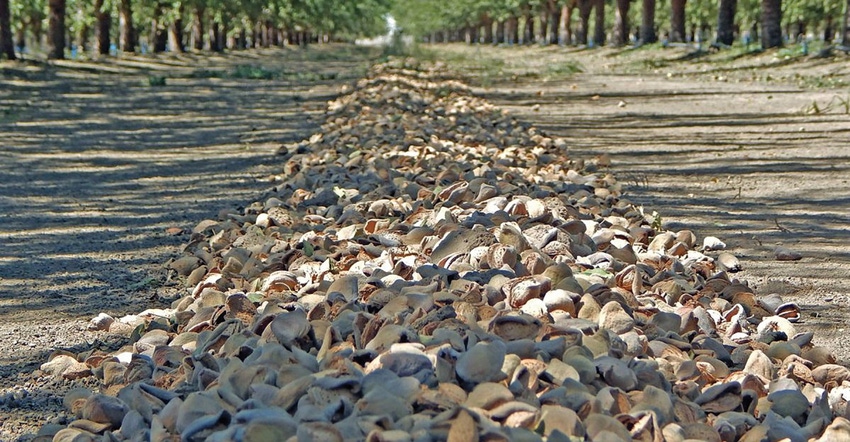
Almonds in California are no longer sustainable at current levels.
That’s the consensus of recent headlines describing the prolonged historic drought --- and increasing restrictions on water use — currently impacting the state’s $6 billion industry and its efforts to produce 80 percent of the world’s almonds. The U.S. Drought Monitor is showing California to be slowly approaching 90% of the state categorized as being in ‘extreme’ drought —especially in the Central Valley.
According to headlines in several publications, an increasing number of growers are expected to abandon their orchards as water supplies become less available, and even when available, prohibitively expensive. Deficit irrigation has become a common practice, short-sheeting almond trees with less water than they really need or want.
Climate change impact may be putting the brakes on an industry that once seemingly would go onward and upward forever as it produced a record poundage in 2020 with tree canopies spread over 2,500 square miles.
As water supply has been reduced for agricultural purposes, farmers are responding by leaving fields fallow or switching to higher-value crops that require less irrigation.
Despite the mounting negatives, many of the industry numbers continue to remain relatively positive, albeit a bit more realistic, as the 2021 nut crop gets loosened from the trees.
With harvest in full swing throughout the state, the Sept. 1 Meridian Growers Market Update notes, “Kernel sizes so far have been in line with the objective estimate. It’s clear that the Nonpareil crop is off with a continued decrease in production and with Nonpareil making up so much of the total production, the objective estimate is becoming more of a reality.”
A 10% decrease
The California Almond Objective Measurement Report published by USDA/NASS predicts a 10% decrease over last year’s record haul, down to 2.8 billion pounds. Forecast for the average nut set per tree is 4,619 which is down 20 percent from last year’s set. Average kernel weight for all varieties sampled is 1.46 grams, also down (3 percent) from the 2020 average weight.
Blue Diamond observers concur with the assessment of variable quality levels in crop harvest to date. “Huller/sheller operators struggle with small kernels as they pass through separation screens,” they write in their end-of-August condition report.
“Kernel size this year is closely related to the stress imposed by higher temperatures and insufficient water during the growing season. Observers also report more stick tights where the hull adheres to the shell along with an elevated number of peelers where the skin is poorly adhered to the kernel and sluffs off during shelling. Peelers are considered equivalent to chipped kernels — with a commensurate reduction in value.”
While peelers are generally considered to be the result of shaking too early, before the nut is physiologically mature, this year growers are wondering if the stress levels caused by high temperatures (triple digit readings in the Sacramento Valley and southern San Joaquin Valley in August) and insufficient water may have played a greater role.
“As the harvest spreads across the Highway 99 corridor,” writes Blue Diamond Vice President Mel Machado, “operations are expected to continue through September and well into October as growers work to complete the harvest.”
Read more about:
AlmondsAbout the Author(s)
You May Also Like




